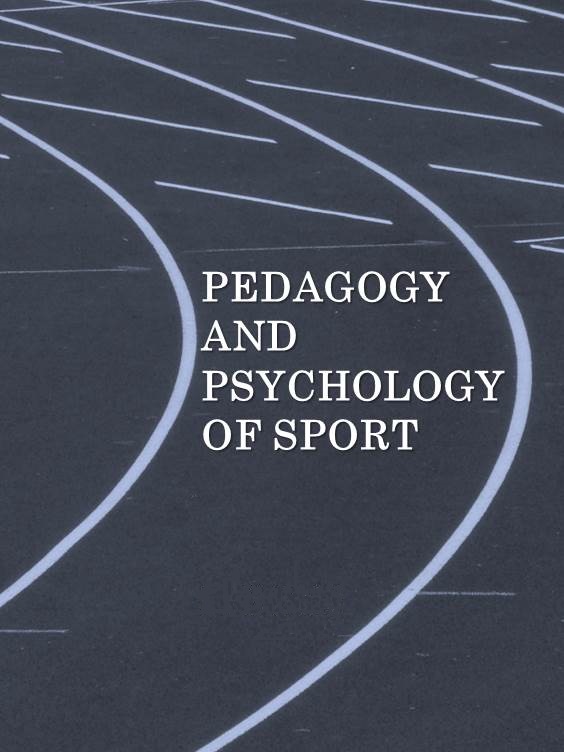The impact of some morphological and motor characteristics in short distance running
DOI:
https://doi.org/10.12775/PPS.2021.07.02.008Keywords
anthropometry, criterion variables 100 metes, regression, student.Abstract
The knowledge of morphological development and their impact on motor skills in short-distance athletes should be one of the main concerns of athletics coaches, because any scientific research in the field of physical culture and sports is about proving the development and evaluation of anthropological characteristics which are responsible for achieving success in athletics. The purpose of this paper is to confirm the impact of some anthropometric characteristics in the execution of running speeds on short distances, specifically in running at 100 meters to students aged 18 ± 6 years of the Faculty of Physical Education and Sports in Prishtina. The sample of this research has included a total of 60 students aged 18 years of the Faculty of Physical Education and Sports in Prishtina. The measurements were executed during September in the hall of the Faculty, while the 100 meter runs in the stadium "Fadil Vokrri" Prishtina. The only condition that was used during the determination of the sample was: that the students are involved in regular physical education classes (and on the day of the measurement be healthy, without the flu, cold or other symptoms). The variables which are applied in this research have been 8 anthropometric variables and 1 motor-specific variables. The results obtained after their processing indicate that the impact of anthropometric variables is higher in running at 100 meters. Short distance running and long distance running reduces the impact of anthropometric parameters whereas the influence of metabolic factors of energy production is increased. These results were also confirmed using regression analysis, so that groups of predictors of anthropometric characteristics, specific motor skills that statistically significantly influenced each variable of individual criteria. The world records below the 10-second limit, in the 100 m, near the 9-meter limit, show not only the high level of sports, but also the strong impact on the growth, especially of strength indicators, speed-strength, explosive force, as main and applied motor skills in sports and athlete’s everyday life.References
Rashiti N., Meta A ., “Studime Sportive” , “Funkcioni i aparatit vestibular në veprimtarit sportive”, Vol. 5, No. 2. Pp. 7, 2002 Tiranë.
Rashiti N., Elezi A., Maliqi A., “Nacionalnata sportna akademiJa “, “Impact of some motor abilities on the manifestation of endurance with highschool students at the age 16 years”, “V. Levski” broji 1 -10, 2010, Sofia
Rashiti N., Nika F., Sylejmani B., “Montenegrin sport academy” “Prediktivna vrjednost baterije motoricnih testova na tercanje kratki i srednjih staze” Vol. 7, No. 3, pp.1-5,2011, Montenegro.
Rashiti V., Rashiti N,. “Journal of Sport Sciences “, “Atletska Ajrobia” , Zbornik Naucnih i Strucnih Radova” Tuzla, ISSN 1840-4790,Vol.5, pp.2-7, 2013 (10), 1019-1026
Ramadani L., Heta G., Bekolli L., Rashiti N., Millaku A., “Journal of Education, Health and Sport”, “The impact of short run distances to the final results of the decathlon at the 2019 Athletic World Championships”, 2019;9(12):101-109. e ISSN 2391-8306. 2020
Rashiti V., Ramadani L., Rashiti N., “St. Kliment Ohridski University”, “The pole of the students educational background at elementary schools and their tesults”, Faculty of Education – Bitola, Vol. 9, No. 1, God. 2020/2
G Heta., L Bekolli., L Ramadani., Q Ramabaja., N Rashiti.,” Difference between midfield and forward football players in active and passive Body Mass Index as well as in the aerobic capacity” Open Access ISSN 2391-8306 formerly ISSN: 1429-9623 / 2300- 665X, 2020
Rashiti N., Myrtaj N., Xhemajli N., “Nauchni trudove na rusenskiJa universitet”, Canon anthropometric relationship between the characteristics and specific motor abilities in football club in Gjilan, 2/ 2011 tom 50, seriJa 8.2
Rhea M. R., “Determining the magnitude of treatment effects in strength training research through the use of the effect size,” Journal of Strength and Conditioning Research, vol. 18, no. 4, pp. 918-920, 2004. DOI: 10.1519/14403.1
Rashiti N., Ajvazi V., Shkodra M., “Characteristicas anthopomertic and motor test for short running 100 meters (famales) ISSN 1311-3321, Ruse, Bugaria
Rashiti N., Nika F., Bekolli L., Heta G., “Jurnal of physical activity and sports” “Difference Betwen finalists in antopometric parameters and 100 meters running of top athlete” vol. 2, no. 3, pp. 1–8, 2017. bot.2017.172689
Spurrs, R.W., Murphy, A.J., & Watsford, M.L. (2003). The effect of plyometric training on distance running performance. Eur J Appl Physiol, 89(1), pp.1-7
Kaynak K., Eryılmaz S. K., Aydoğan S., Mihailov D., “The effects of 20-m repeated sprint training on aerobic capacity in college volleyball players,” Biomedical Human Kinetics, vol. 9, no. 1, pp. 43–50, 2017. DOI: 10.1515/bhk-2017-0007
Kotzamanidis C., “The effect of sprint training on running performance and vertical jumping in prea-dolescent boys,” Journal of Human Movement Studies, vol. 44, no. 3, pp. 225-240, 2003.
Mero A., Komi P. V., Gregor R. J., “Biomechanics of sprint running. A review,” Sports Medicine, vol. 13, no. 6, pp. 376–392, 1992. DOI: 10.2165/00007256-199213060-00002
Wellenkotter J, Kernozek TW, Meardon SA, Suchomel TJ. The Effects of Running Cadence Manipulation on Plantar Loading in Healthy Runners. International Journal of Sports Medicine. 2014;35(9):1–6.
Messier SP, Messier SP, Mihalko SL, Ip E, DeVita P, Cannon DW, et al. A 2-Year Prospective Cohort Study of Overuse Running Injuries: The Runners and Injury Longitudinal Study (TRAILS). The American Journal of Sports Medicine. 2018;46(9):2211–2221.
Kessler DF. Running faster: Changing Running Technique to Reduce Stress Injuries. International Journal of Athletic Therapy and Training. 2020;25:49–53.
Mokha M, Gatens D. Hip and Pelvis Biomechanics during Running as Risk Factors for Injury in Collegiate Runners: A Prospective Study. Journal of Exercise and Nutrition. 2018;1(4):1–6.
Downloads
Published
How to Cite
Issue
Section
License
The periodical offers access to content in the Open Access system under the Creative Commons Attribution-NonCommercial-ShareAlike 4.0
Stats
Number of views and downloads: 636
Number of citations: 0



